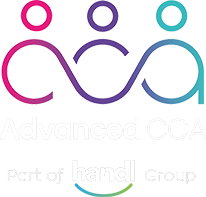AAA Risk Assessments
The ‘Assessment Analysis Achievement’ risk assessment (or ‘AAA’ assessment for short) is used to assess parents/carers where findings have been made as to their responsibility for either causing physical injury to a child (or where their responsibility for causing the injury could not be excluded) or failing to protect the child and where such findings are denied by the parent/carer.
The AAA risk assessment broadly mirrors the Resolutions Model of assessment, the use of which was reported in a judgment of HHJ Baker in Re J (A Child) (Resolutions Model) [2021] EWFC 58.
In Re J, HHJ Baker allowed an assessment of the parents that afforded them an opportunity to care for the younger sibling of the originally injured child with an extensive package of support and monitoring.
The assessment approved by HHJ Baker followed the Resolutions Model in which greater time for assessment is allowed, a more focused assessment of risk is completed and a fuller account of the parents’ support network and its ability to safeguard the child in practice is taken than that arising in standard risk and parenting assessments.

The purpose of the assessment method is to consider, even in the face of denied responsibility for the injuries, could the child/ren remain with or be rehabilitated to their parent’s care.
This approach assesses the family and wider support network available and seeks to identify if a safety plan can be implemented for the family and the child/ren.
The AAA risk assessment…
Was developed in 2005 by ACCA’s managing consultant, Mark Webb, and has been completed on approximately 50 occasions since.
Is undertaken by one of a bespoke team of Independent Social Workers from our panel with the seniority and experience to undertake the assessment.
Offers the opportunity for therapeutic input for both parents and members of their support network.
Is completed in 14 rather than 26 weeks, thereby reducing delay for the child.
Involves a midway review at which progress is considered with key personnel with a view to exploring, amongst other things:- (i) whether the assessment can/should continue; (ii) the creation of a safety plan; (iii) whether steps should be taken to extend interim contact; and (iv) what further support is required for the parents, their support network and the child including how this might be delivered.
Is complemented by services arising as part of ACCA’s 24/7 in the Home Programme in terms of interim support and monitoring particularly in respect of extended periods of supervised contact.
Focuses on the perpetrator’s response to the court’s findings; and a full exploration of protective rather than just supportive members of the family’s network including their response to the court’s findings.
Most importantly, the assessment offers the fullest opportunity for informed care planning and exploration as to whether the subject child can remain in/return to the safe care of its parents – it is in that context that the timeframe for and costs of the assessment should be seen.


